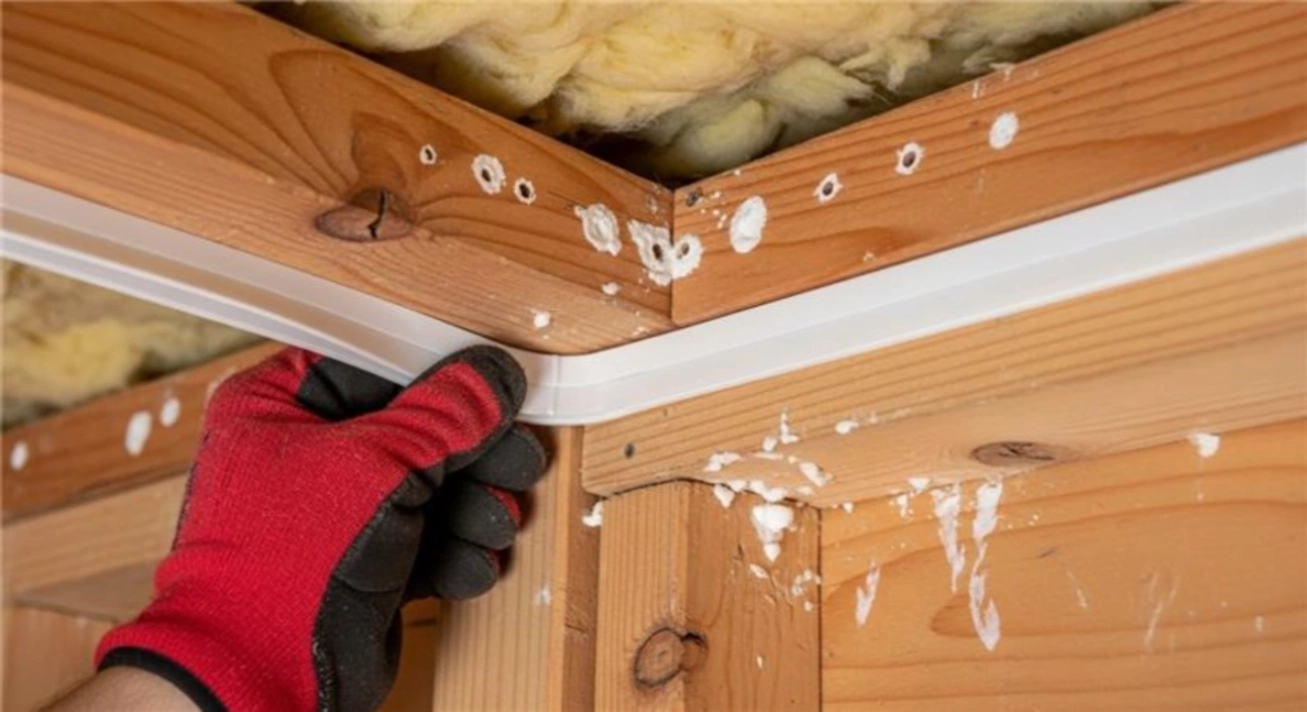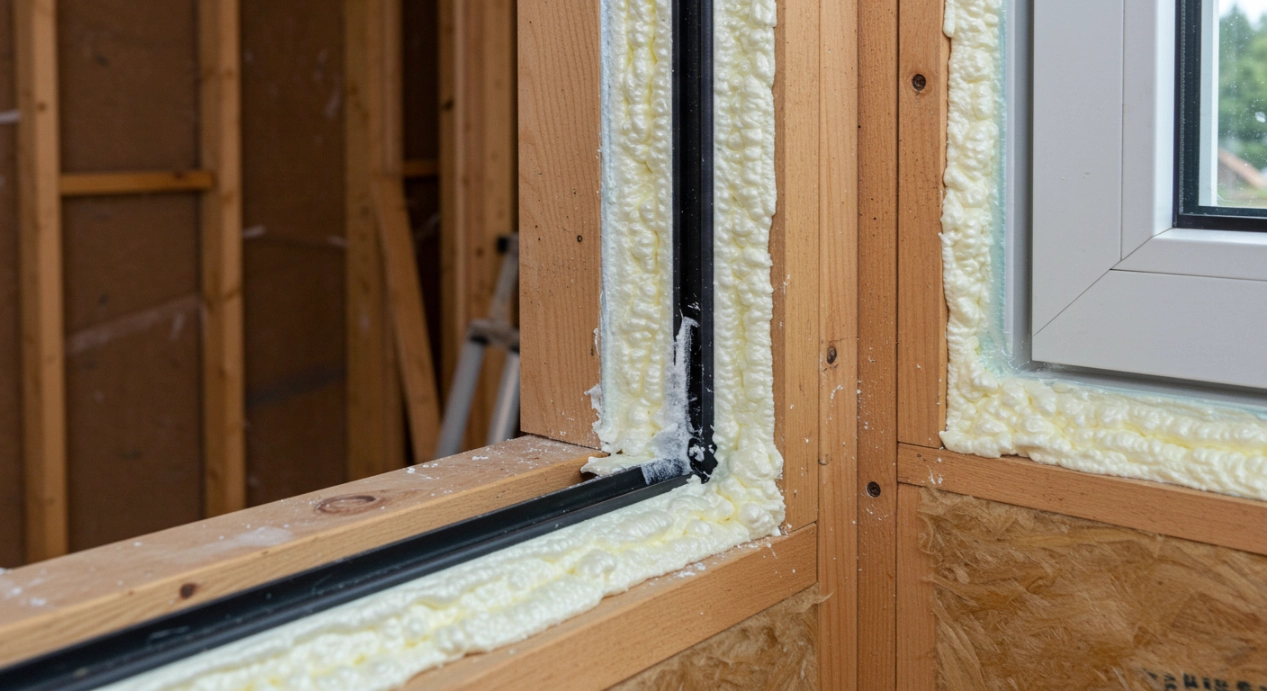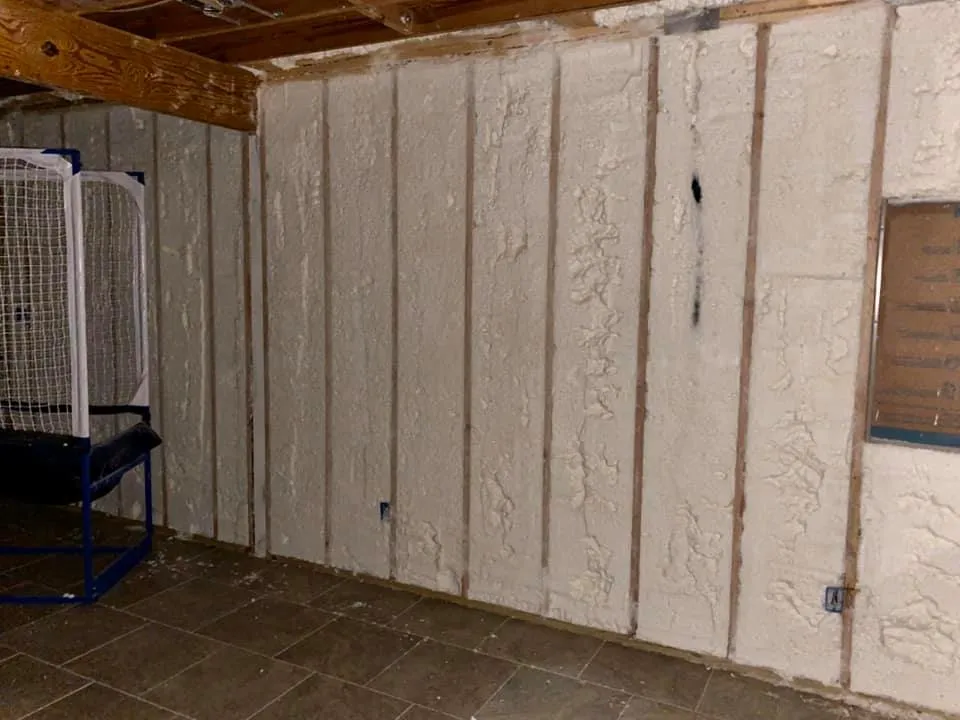Air sealing with spray foam is critical for energy efficiency because it eliminates air leakage that accounts for 25-40% of heating and cooling energy loss in typical buildings. Unlike traditional insulation materials that only slow heat transfer, spray foam creates an airtight barrier that prevents conditioned air from escaping and unconditioned air from entering. This comprehensive sealing approach can reduce energy consumption by up to 50% while improving indoor comfort and air quality.
Spray foam’s unique expanding properties allow it to fill gaps, cracks, and irregular spaces that other insulation materials cannot reach. The material bonds directly to surfaces, creating a continuous thermal boundary that maintains consistent indoor temperatures with less HVAC system strain. Professional application ensures proper coverage in critical areas where air leakage commonly occurs, including rim joists, penetrations, and structural connections.
How Air Leakage Impacts Energy Performance
Air infiltration forces heating and cooling systems to work harder to maintain desired temperatures. Every cubic foot of conditioned air that escapes through unsealed gaps must be replaced with treated air, creating continuous energy demand. According to the Department of Energy, buildings with poor air sealing can experience air changes ranging from 0.7 to 1.5 per hour, while properly sealed structures maintain rates below 0.35 air changes per hour.
The financial impact becomes substantial over time. Energy Star data indicates that comprehensive air sealing can reduce utility bills by 15-30% annually. In regions with extreme weather conditions, these savings increase significantly as HVAC systems cycle less frequently to maintain comfort levels.
Bonus Tip: Focus air sealing efforts on the building envelope’s thermal boundary rather than attempting to seal every small crack. Priority areas include attic floors, basement ceilings, and exterior wall penetrations where temperature differences create the strongest pressure gradients.
Spray Foam Types and Air Sealing Performance
| Foam Type | R-Value per Inch | Air Permeability | Vapor Permeability | Primary Applications |
|---|---|---|---|---|
| Open Cell | R-3.5 to R-3.8 | Excellent air barrier | Vapor permeable | Interior walls, attics |
| Closed Cell | R-6.0 to R-7.0 | Superior air barrier | Vapor impermeable | Exterior walls, basements |
| High-Density Closed Cell | R-6.5 to R-8.0 | Maximum air sealing | Vapor impermeable | Commercial applications |
Closed-cell spray foam provides superior air sealing properties due to its dense cellular structure. Each cell remains separate, creating a moisture barrier alongside thermal resistance. Open-cell foam expands more during application, making it effective for filling large cavities and irregular spaces, though it requires vapor barriers in certain climates.
The expansion ratio affects sealing performance significantly. Open-cell foam expands 100-150 times its liquid volume, while closed-cell foam expands 30-60 times. This expansion characteristic determines how effectively each type fills gaps and creates continuous air barriers.
Critical Air Sealing Locations
Building science identifies specific areas where air leakage occurs most frequently. Rim joists account for approximately 30% of total air leakage in many structures. These structural connections between floors create natural pathways for air movement, particularly in basement and crawl space areas.
Penetrations through the building envelope represent another significant leakage source. Electrical outlets, plumbing penetrations, and HVAC ductwork create openings that traditional insulation cannot effectively seal. Spray foam insulation‘s ability to conform to irregular shapes makes it ideal for these applications.
Bonus Tip: Conduct blower door testing before and after spray foam installation to quantify air sealing improvements. This testing reveals remaining leakage paths and validates the effectiveness of sealing efforts.
Climate Zone Considerations
| Climate Zone | Primary Concern | Recommended Foam Type | Special Considerations |
|---|---|---|---|
| Hot-Humid (1-3) | Moisture control | Closed-cell exterior | Vapor barrier placement critical |
| Mixed (4-5) | Seasonal variation | Open-cell interior, closed-cell exterior | Balanced approach needed |
| Cold (6-8) | Heat retention | Closed-cell preferred | Condensation prevention priority |
Regional building codes influence spray foam selection and installation requirements. Hot, humid climates require careful vapor barrier planning to prevent moisture accumulation within wall assemblies. Cold climates prioritize maximum R-value and continuous thermal barriers to prevent heat loss and condensation.
Moisture management strategies vary by location. Coastal areas with high humidity levels benefit from closed-cell foam’s moisture resistance, while dry climates can utilize open-cell foam without moisture concerns. Understanding local weather patterns helps determine optimal foam selection for long-term performance.
Things to Consider Before Air Sealing Installation
Evaluate existing ventilation systems before comprehensive air sealing. Tighter building envelopes require adequate mechanical ventilation to maintain indoor air quality. Homes with natural ventilation may need ventilation system upgrades after air sealing improvements.
Assess structural conditions that could affect spray foam performance. Moisture problems, pest infestations, or structural damage should be addressed before insulation installation. Spray foam bonds permanently to surfaces, making future access for repairs more challenging.
Consider occupant sensitivity to installation odors and curing processes. Temporary relocation may be necessary during application and initial curing periods. Plan installation timing to minimize disruption while ensuring proper curing conditions.
Professional installation ensures optimal performance and warranty coverage. Certified applicators understand proper mixing ratios, application temperatures, and thickness requirements for different foam types. Equipment calibration and environmental conditions significantly impact final product quality.
Bonus Tip: Schedule installation during moderate weather conditions when possible. Extreme temperatures can affect foam expansion rates and curing times, potentially compromising air sealing effectiveness.

Stellrr’s Comprehensive Insulation Solutions
Stellrr provides specialized spray foam services designed to maximize energy efficiency through professional air sealing techniques:
- Residential Spray Foam Insulation: Complete home air sealing using open-cell and closed-cell applications tailored to specific structural requirements and climate conditions.
- Commercial Spray Foam Insulation: Large-scale building envelope sealing for commercial structures requiring consistent thermal performance and energy code compliance.
- Attic Insulation: Strategic foam application in attic spaces to eliminate thermal bridging and create continuous air barriers at critical building envelope transitions.
- Crawlspace Insulation: Specialized foam installation in challenging below-grade environments where moisture control and air sealing must work together.
Common Questions About Spray Foam Air Sealing
How long does spray foam maintain its air sealing properties?
Properly installed spray foam maintains effective air sealing for the building’s lifespan when protected from UV exposure and physical damage. The material bonds chemically to surfaces, creating permanent adhesion that doesn’t degrade over time like mechanical fastening systems.
Can spray foam be applied over existing insulation?
Spray foam can be applied over certain existing insulation types, but removal often provides better results. Fibrous insulation should be removed to ensure proper foam adhesion and eliminate potential moisture trapping. Professional assessment determines the most effective approach for each situation.
What safety considerations apply during spray foam installation?
Professional installation requires proper ventilation, personal protective equipment, and temporary occupant relocation during application and initial curing. Off-gassing typically dissipates within 24-48 hours with adequate ventilation, after which spaces become safe for normal occupancy.
Making the Right Air Sealing Decision
Air sealing with spray foam represents a significant investment in long-term energy efficiency and comfort. The comprehensive nature of spray foam installation makes it particularly valuable for buildings with substantial air leakage problems or those undergoing major renovations.
Evaluate total energy savings potential against installation investment. Buildings in extreme climate zones typically see faster payback periods due to higher energy costs and greater temperature differentials. Consider spray foam air sealing as part of a whole-house energy efficiency strategy that may include HVAC upgrades and window replacements.
Document baseline energy consumption before installation to measure actual savings. Utility bill analysis over multiple seasons provides concrete evidence of spray foam’s impact on energy efficiency. This documentation proves valuable for potential energy rebates and future property valuations.
Professional Air Sealing Services
Achieving maximum energy efficiency through air sealing requires professional expertise and proper equipment. Stellrr’s certified technicians ensure optimal spray foam application that creates lasting air barriers while maintaining structural integrity and indoor air quality standards.
Professional installation includes comprehensive building assessment, appropriate foam selection, and post-installation testing to verify air sealing effectiveness. Contact Stellrr at info@stellrr.com or (512) 710-2839 to schedule a detailed evaluation of air sealing opportunities in residential or commercial properties.
Explore how Stellrr Insulation & Spray Foam is helping local homeowners and businesses achieve better energy efficiency through advanced spray foam solutions.
Frequently Asked Questions
Does spray foam air sealing work in all building types?
Spray foam air sealing adapts to various building types, from residential homes to commercial structures. Application techniques vary based on construction methods, but the fundamental air sealing principles remain effective across different architectural styles and building ages.
How much energy savings can realistic expectations include?
Energy savings from spray foam air sealing typically range from 15-50% depending on existing building tightness, climate zone, and HVAC system efficiency. Buildings with significant air leakage problems see the greatest improvements, while already tight structures show more modest gains.
What maintenance does spray foam air sealing require?
Spray foam air sealing requires minimal maintenance once properly installed. Annual visual inspections check for physical damage or UV exposure in accessible areas. Damaged sections should be professionally repaired to maintain air barrier integrity.
How does spray foam air sealing compare to other sealing methods?
Spray foam provides superior air sealing compared to caulks, weatherstripping, or plastic barriers due to its expansion properties and permanent adhesion. Traditional sealing methods work well for specific applications but cannot match spray foam’s comprehensive coverage of irregular spaces and structural connections.
When should existing insulation be removed before spray foam installation?
Existing insulation removal depends on type, condition, and moisture content. Wet or damaged insulation requires removal, while dry, intact materials may remain if they don’t interfere with foam adhesion. Professional assessment determines the most cost-effective approach for each project.





